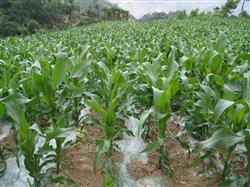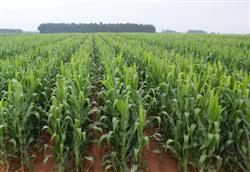How to manage corn seedlings in summer?

How to manage corn seedlings in summer? Please introduce that summer corn seedlings can be managed as follows: 1. Check the seedlings and replenish them. After emergence, you should often check the seedlings in the field, and replant or transplant in time when you find that the seedlings are missing. Lack of seedlings can leave double seedlings on both sides of broken ridges, and more lack of seedlings can transplant good seedlings with mud balls and pour enough water when maize has 2 to 3 leaves. For replanting and transplanting corn seedlings should be partial to water and fertilizer to promote their rapid growth so as to achieve uniform and strong seedlings. two。 The seedlings are fixed. Maize seedlings were planted once during the 3-leaf period and timely at the 5-leaf stage. Diseased seedlings, weak seedlings, big seedlings and miscellaneous seedlings should be removed when seedlings are fixed, and the uniformity of the population should be improved. The time should be in the sunny afternoon. The general large panicle type varieties retained 3000 to 3200 seedlings per mu, the middle panicle type varieties kept 3500 to 4000 seedlings per mu, and the dense planting tolerant varieties retained 4000 to 4500 seedlings per mu. 3. Ploughing and hoeing. Middle ploughing in maize seedling stage can break soil consolidation, promote root binding, and improve the condition of light transmission and ventilation of maize seedlings. Generally, it can be carried out for 2 to 3 times. Before setting the seedlings, the seedlings are small and can be ploughed once, and the pressure of seedlings should be avoided during the intertillage. The middle tillage depth should be 3 cm to 5 cm, the seedling side should be shallow and the interrow depth should be deep. 4. Chemical weeding. Chemical weeding should strictly select the types of herbicides and accurately control the amount of herbicides. After corn sowing, use herbicide Yi A mixture before emergence, add 30 kilograms of water per mu, evenly spray the ground, or use 50% Acetochlor emulsion, 100 milliliters per mu plus 35 kilograms of water, evenly spray the surface between rows. Corn up to 30 cm can be directional spray, per mu can use 20 grams of water-free agent 150 ml plus 40 kg of water to spray the ground, be careful not to spray on the corn. 5. Squatting seedlings make you strong. Squatting seedlings should start from seedling stage to end before jointing stage. Squatting seedlings should master the principle of "squatting black without squatting yellow, squatting fat without squatting thin, squatting dry without squatting wet". The growth condition of interplanting corn is poor, so it is generally not suitable for squatting seedlings. 6. Apply fertilizer to seedlings. Topdressing is generally carried out after setting seedlings to before jointing stage, and this topdressing can promote roots, strong seedlings and leaves and stalks. Organic fertilizer, phosphate fertilizer, potash fertilizer and micro-fertilizer should be applied at the seedling stage combined with ploughing as early as possible. High-yield fields require 55 kg of standard phosphate fertilizer, 25 kg of standard potash fertilizer, 1 kg of zinc sulfate and 30 kg of nitrogen fertilizer per mu. Medium-and low-yield fields should also use up organic fertilizer, phosphate fertilizer, potash fertilizer and so on at the seedling stage. 7. Pest control. There are many kinds of pests in maize seedling stage, especially summer corn is prone to diseases and insect pests. At present, the main pests harmful to corn at seedling stage are ground tiger, aphid, thrips, cotton bollworm, lamp moth, wheat straw fly and so on. Control method: use poisonous soil or seed coating agent to mix seeds when sowing. After emergence, 2.5% of the enemy can be used to kill 1000 times of the liquid, in the evening to spray seedlings on the ground to control ground tigers. 1500 times of dimethoate emulsion can be used to spray the seedling heart to control aphids, thrips and rice planthoppers. Control armyworm with 20% butyl EC or 50% phoxim 2000 times solution. Maize seedling stage is easy to be infected by virus, which is the prone period of rough dwarf disease and dwarf mosaic disease. Timely elimination of gray planthopper and aphids in the field and around can reduce the occurrence of the disease. Click to get more corn planting techniques click to get more food crop planting techniques
- Prev

How to fertilize corn in summer?
How to fertilize corn in summer? Please guide summer corn to be fertilized as follows: adequate base fertilizer: the growth period of summer corn is relatively short. According to the conditions of fertilizer sources, more mature organic fertilizer should be applied as much as possible, combined with nitrogen, phosphorus and potassium fertilizer. Timely and appropriate amount of topdressing: corn needs more fertilizer, base fertilizer alone can not be full.
- Next

How to use chemical weeding to grow corn in summer?
How to use chemical weeding to grow corn in summer? Please refer to the following methods for weeding when planting corn in summer: first, according to the investigation of the county plant protection station, the main weeds in summer corn fields in our county are: field spiral flower, sophora officinalis, Rhizoma Scutellariae, Fructus Scutellariae, Portulaca oleracea, Setaria angustifolia, Scutellaria przewalskii, etc. ...
Related
- The first cup of black tea in spring, the flavor and history of tea gardens in Kenya, Africa
- The computer can not only choose potatoes, but also grow tea rice. AI will grow winter oolong tea champion.
- It is not only the inflated tea bitten by insects, but also engraved with the four seasons tea in Beipu.
- The Oriental Beauty Tea Festival in Zhuxian County takes the stage at the weekend to experience the plus-size feast of oil tea.
- & quot; Oriental Beauty Tea & Exploration of Emei in Hsinchu, the hometown of quot;
- The new variety of strawberry "Tainong 1" dessert is the first choice with mellow aroma. Crimson gorgeous
- History of Tea in Taiwan: from Wild Inner Mountain to Export Tea Garden
- Two types of Taiwan Oriental Beauty Black Tea won the British three-Star Award for Childhood Tea Xiang Zhang Jiaqi changed from pilot to champion tea maker.
- Banana species and varieties: the planting history of Taiwan Xianren banana and dwarf banana is long, is banana disease resistant?
- Coffee planting Technology: Qianjie Coffee from Seedling to harvesting

